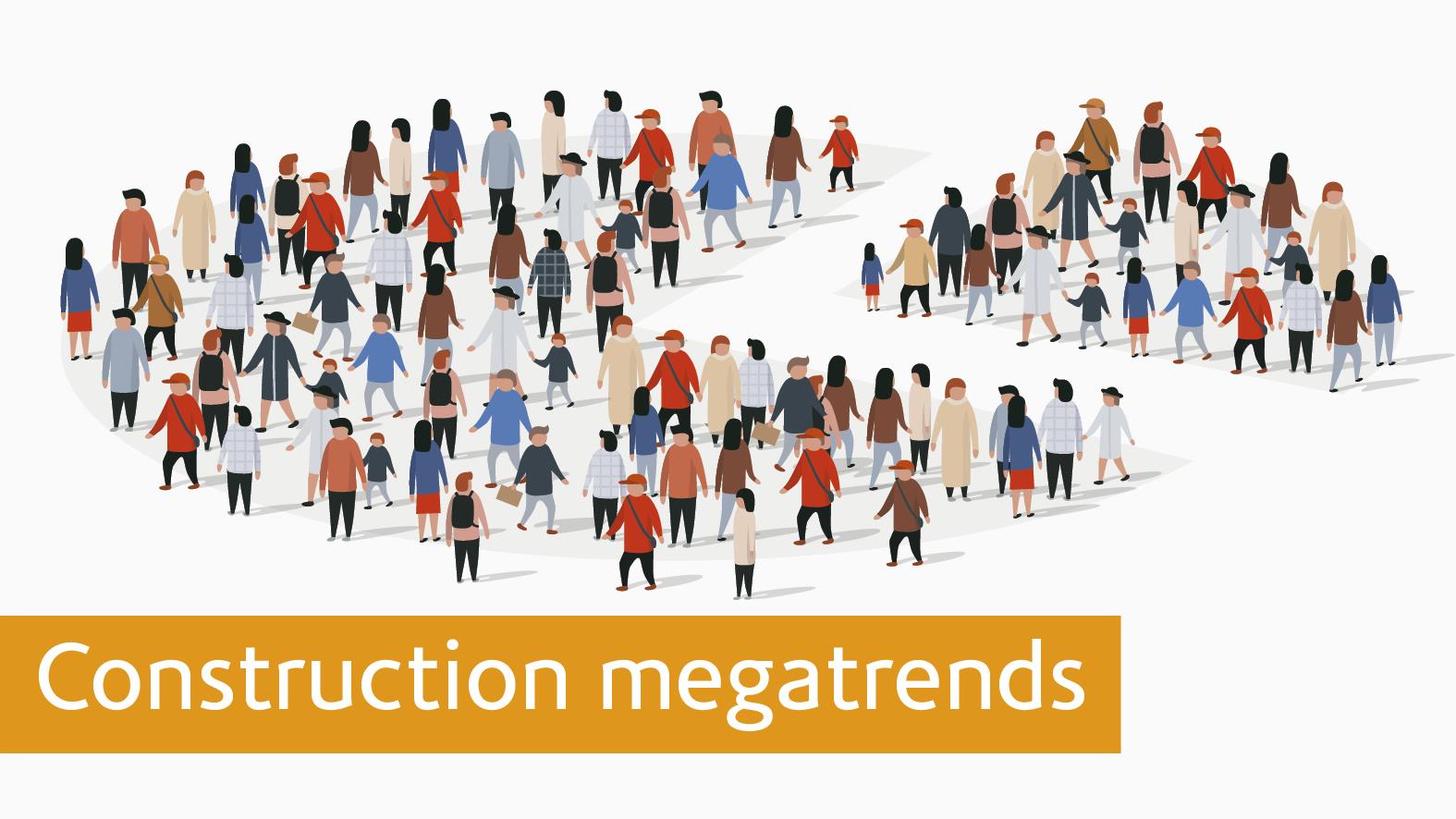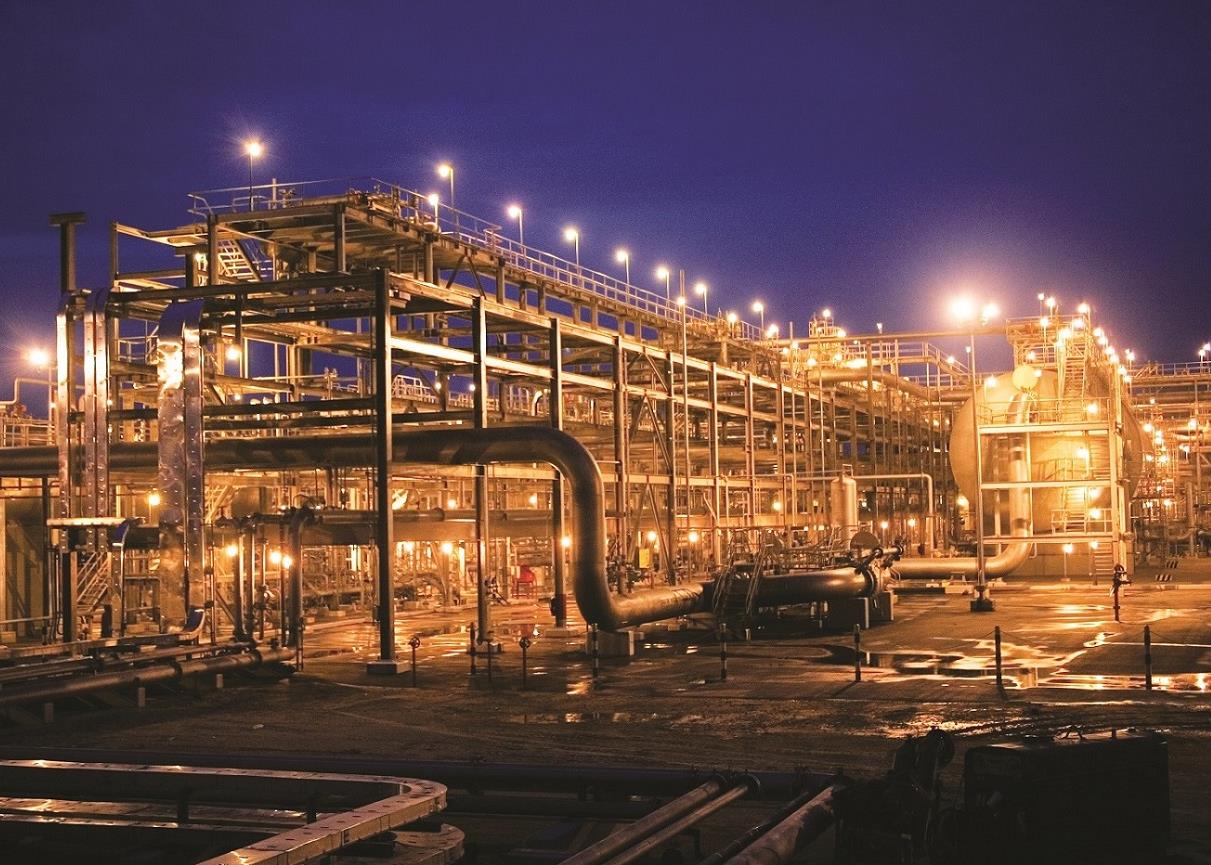

 This article is extracted from the report 'Construction Megatrends'
This article is extracted from the report 'Construction Megatrends'
One of the biggest trends that will shape the future of construction and infrastructure in the UAE and the Middle East is the changing composition of its demographic structure.
The UAE’s population is relatively young. Data from the CIA World Factbook highlights that the majority of the population falls in the 25-54 age bracket (68 per cent), while nearly a quarter of the population is below the age of 25.
Having robust housing, healthcare and education systems are critical for any developing economy with a largely young population. The UAE has made considerable investments in these areas over the years, but may face setbacks, as Covid-19 and the instability of oil prices affects spending capabilities.
Governments across the world now face a dilemma on whether to increase infrastructure spending as a means to stimulate their economies or to hold back on committed infrastructure spending.
 Social infrastructure to remain a priority in 2021
Social infrastructure to remain a priority in 2021
As of October 2020, the UAE’s pipeline of social infrastructure projects at the pre-execution stage includes 157 schemes with a net contract value of $31.8bn. Residential projects make up 93 per cent of the pipeline’s value.
The UAE has 130 residential projects with a net value of $29.5bn in the pre-execution phase. The largest of these projects is Dubai developer Emaar Properties’ The Valley in Dubai, a $6.6bn residential community, followed by its $4.9bn Lusaily homes. Both projects are being designed, according to regional projects tracker MEED Projects.
Only 25 of the 130 residential projects, with a net value of $4bn, are currently at the prequalification, bid evaluation or main contract procurement stages.
Insufficient funds
The data indicates that while project owners have the appetite to build more residential schemes, real spending on contracts is being held back by funding constraints.
Governments across the world now face a dilemma on whether to increase infrastructure spending as a means to stimulate their economies or to hold back on committed infrastructure spending.
However, several residential projects are somewhat immune to these risks, with tendering activity under way for projects such as Eagle Hills’ Ramhan Island development. Infrastructure works are being procured for the Abu Dhabi developer’s project, which has a net value of about $950m.
Bid evaluation is also ongoing for the Elan townhouses within Dubai-based Majid al-Futtaim’s Tilal al-Ghaf masterplanned scheme in Dubai. Submissions for the main contract were made by local and international contractors prior to the temporary business closures and delays brought on by Covid-19, and an award is expected by the end of this year.
Project spending is likely to be revised downwards in Dubai’s residential sector as the oversupplied residential real estate market threatens to further damage the profitability of the sector’s largest developers.
Abu Dhabi is a particularly active market for residential schemes at the moment, with bid evaluation ongoing for schemes such as oil firm Adnoc Offshore’s Das Island homes ($668m), staff accommodation at Khalifa Industrial Zone Abu Dhabi ($225m), phase 1 of the Saadiyat Lagoons district ($200m) and Al-Wathba north and south ($150m).
Clients such as Adnoc Offshore could provide opportunities for civil contractors struggling to find new work, but there is little doubt Covid-19’s economic impact will exacerbate the challenges posed by oversupplied residential stock in the UAE.
Project spending is likely to be revised downwards in Dubai’s residential sector as the oversupplied residential real estate market threatens to further damage the profitability of the sector’s largest developers.
Bishoy Azmy, CEO of local contractor ASGC, told MEED earlier this year that further demand reductions would “probably occur after a year or so”, when markets start to recover from the immediate shock of the Covid-19 crisis and changing trends are noted in the end-user segment.
“We will observe how [that change] will impact the demand for the products that contractors build,” he said.
Progress unlikely
Other social infrastructure asset classes, such as schools, universities, hospitals and medical cities, appear likely to receive even lower spending in the months ahead.
The 27 education and healthcare projects in the UAE’s pre-execution pipeline have a net value of $2.3bn. The largest of these schemes is local client Manazel’s Mohammed bin Zayed medical city, an under-design project with a net value of $408m. Also in the pipeline is a $200m medical city that Saudi German Hospitals Group is studying for development in Dubai.
In the education sector, the 10th phase of Musanada’s Abu Dhabi Future Schools scheme is the largest pre-execution project, followed by Dubai Municipality’s plan to expand the Zayed University campus at Dubai Academic City. Both schemes are valued at $150m each.
Other social infrastructure asset classes, such as schools, universities, hospitals and medical cities, appear likely to receive even lower spending in the months ahead.
The size of education and healthcare projects for which tendering activity is under way is even smaller. Of the eight projects currently at the prequalification, bid evaluation or main contract procurement stages, Musanada’s medical rehabilitation centre in Abu Dhabi ($135m) is the largest. It is followed by the local Al-Shirawi Group’s primary and secondary school in Al-Furjan, Dubai. Bid evaluation is ongoing for the $82m scheme.
 Spending on social infrastructure schemes may slow down in the near term as public and private sector entities seek to mitigate the financial impact of Covid-19.
Spending on social infrastructure schemes may slow down in the near term as public and private sector entities seek to mitigate the financial impact of Covid-19.
The UAE’s population is also expected to shrink by 10 per cent, according to an estimate by Oxford Economics earlier this year.
At the same time, there is a case to be made for social infrastructure developments, especially housing, healthcare and education, rather than commercial projects. In the post-Covid-19 world, the former will arguably be more critical to the functioning of societies.
Perhaps recent efforts by the government to offer long-term residency in the UAE could stimulate a demographic transition, and may lead to more retirees residing in the country, opening up new opportunities for social infrastructure schemes.
Download your copy of the report here
You might also like...

Masdar and Etihad plan pumped hydro project
19 April 2024

Ewec signs Ajban solar PV contract
19 April 2024

Red Sea Global awards Marina hotel infrastructure
18 April 2024
A MEED Subscription...
Subscribe or upgrade your current MEED.com package to support your strategic planning with the MENA region’s best source of business information. Proceed to our online shop below to find out more about the features in each package.








